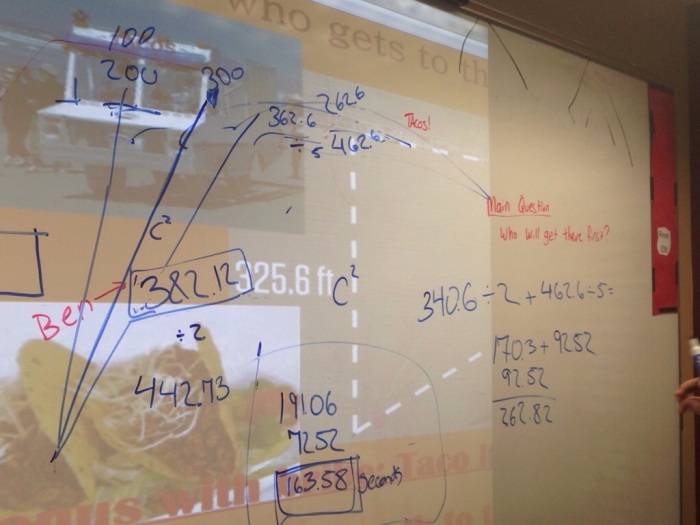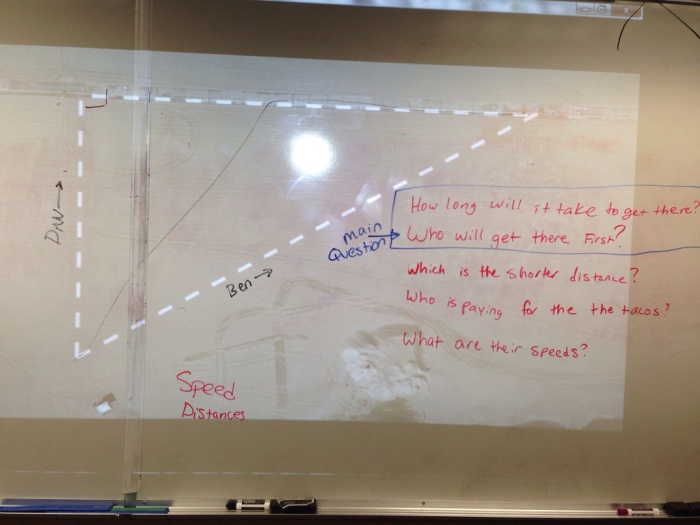I wanted to make a quick post to remind my future self how the Mathalicious lesson Cheese that Goes Crunch went this school year & how I should adapt it for the future.
The purpose of this activity is to have students develop a method to relate cheesiness to the non-cheesy portion of a crunchy vs puffy Cheeto in order to develop a measurement of which is cheesier & by how much. It is a realistic application comparing surface area to volume.
I have 3 sections of geometry, so I attempted this lesson 3 times, each a little differently – and I’d do this lesson again next year, but with more changes.
In my first class I made a fatal error – I distributed cups to the students and then ran around the room with a giant bag of Cheetos pouring them into each cup. This turned the class into a party. Students sat with Cheetos while not working on anything. BIG MISTAKE. When I tried to engage the class in the lesson there was little buy in or understanding of the goal of this activity and I ended up dragging my class through each component of the activity. While it was completed in the end, it was not understood by students.
For my next two classes, I set up cups with crunchy & puffy Cheetos in advance and set them out of sight. I introduced the activity and had good discussion and student ideas of which type of Cheeto was more cheesy and why. I didn’t provide them with Cheetos until they had a plan for determining which one was more cheesy and they concluded that the cheese was around the exterior, so the needed to compare surface area to volume.
I also found it pretty amusing how many students felt the need to organize their Cheetos:
Overall the activity was a great way to have students apply volume and surface area to a context. Next year I will make this task run more like a 3 act and less like a guided worksheet. I don’t want to tell the students what to think and when. It’s too helpful to tell them to approximate each Cheeto as cylinder and guide them to find the surface area and then the volume, and then find a ratio. Students don’t have the same degree of curiosity and satisfaction compared to them deciding what they need to do themselves.
This lesson took one 45 minute class period, but If I make these adaptations for next year It will most like take two: One period for the initial student question development and calculations and a second for student presentations and possibly time for them to improve or reflect on their work. OR maybe a gallery walk and whole class discussion.
I’ll adapt it like this next year:
Act 1 will beg the question of which type Cheeto has more cheese flavor. I will work through a notice/wonder and develop a main question.
Act 2 will be students determining what information they needed and equating a serving of crunchy Cheetos to puffy Cheetos. Then finding the volume and surface area of an average Cheeto and developing and justifying a method to measure cheesiness.
Act 3 will include student presentations of their analysis effectively sequenced as described in the 5 Practices book and maybe a reveal of how much more cheese powder per volume there are in crunchy vs puffy Cheetos (although this may not be necessary).
This task is a great idea and is worth doing with students. I think I struggled with its implementation because I did not develop enough student buy in and understanding of the question from the start – which I continue to be reminded is a critical component to successful student problem solving.
























